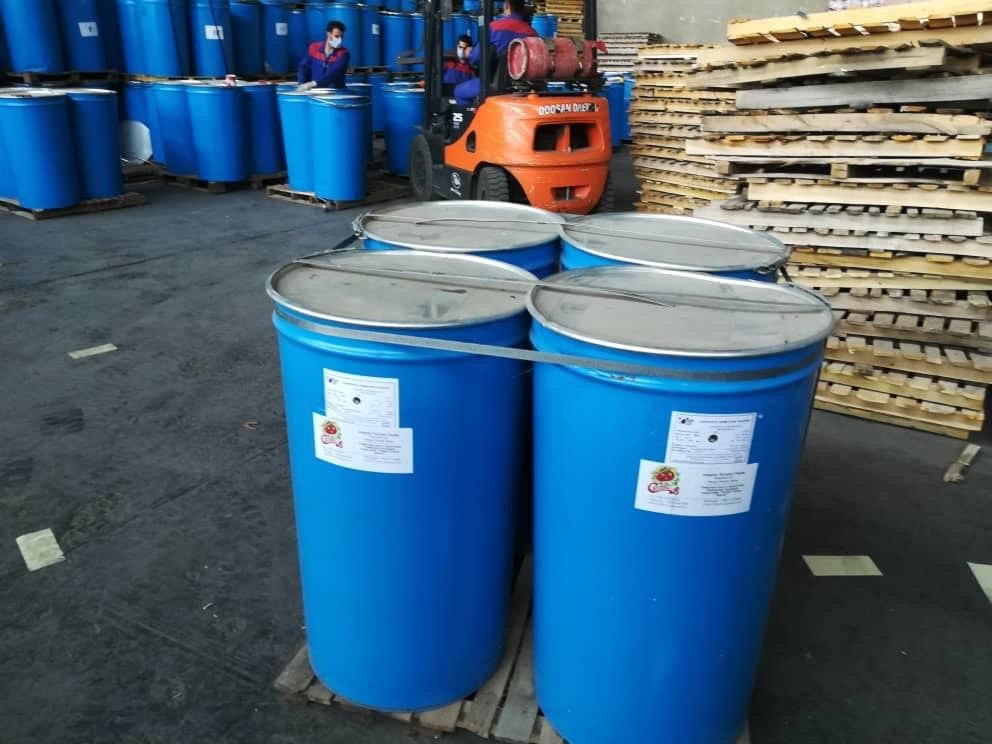The price of aseptic paste is calculated based on its brix:

Some points about using tomato paste chi chi las
February 15, 2025
Iranian tomato paste in different ports
February 18, 2025The production of tomato paste is carried out through aseptic processing. Specifically, aseptic manufacturing and packing involve loading a technically sterilized commodity into sterilized plastic, combined with strategies that lead to sealing with a hygienic closure in a microorganism-free atmosphere.
Because of its rich combination of vitamins A and C, as well as other beneficial elements, the tomato is one of the most popular crops. Moreover, it plays a significant role in promoting the well-being of communities. Additionally, it is available in various forms, including paste, ready meals, soup, stew, puree, and tomato juice.
The term aseptic frequently refers to a specific type of packaging. In fact, many standards apply in the production and packaging of aseptic tomato paste. Consequently, this packaging method is especially common for exported tomato paste.
To begin with, manufacturers sterilize the packaging materials and containers. Then, they fill the containers with tomato paste under vacuum conditions. Finally, they seal the packages in a way that effectively prevents the entry and penetration of microbes.

The aseptic process consists of three primary stages:
- Thermal sterilization of the product
- Sterilization of packaging
- Therefore, it is essential to maintain sterilization during packaging to ensure product safety and quality.
Characteristics of aseptic tomato paste
- First grade concentrated tomato juice
- Tomato paste with Brix 36-38
- Pure tomato paste without additives
- No salt
- without preservatives
- First, tomato paste is filled into special bags, and then it is placed in aseptic barrels for safe storage and transport.
- At a weight of 230 kg
- Blue metal barrels
- Very hard and thick texture
 The price of aseptic paste is calculated based on its brix:
The price of aseptic paste is calculated based on its brix:
- order amount
- time of purchase
- domestic sales
- Selling for export
- Buy from the factory
- Buy from an intermediary
- Due to the inflation of the dollar, the price of aseptic tomato paste is variable and frequently updated. Moreover, it is calculated in foreign currency, which further influences its fluctuations.
Contact Us to Buy or Distribute
General Director: Engineer Ibrahim Paski
📱 Mobile: +98 912 043 7969
📞 Office Phone: +98 11 33 30 4007
📠 Fax: +98 11 33 30 4007
📧 Email: foodkov@yahoo.com




